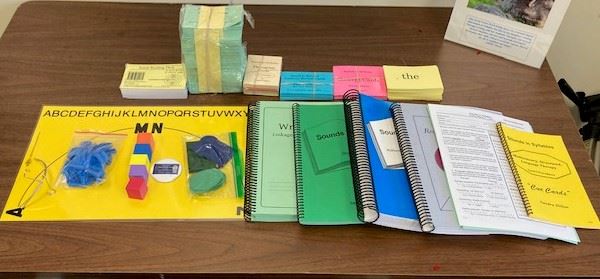|
ONLINE Language 1: Sounds in Syllables: Structured Literacy
Required for Therapy Level Certification
Developed by Sandra Dillon, Director of the Multisensory Language Training Institute of New Mexico, Sounds In Syllables (SIS) is the most powerful Orton-Gillingham approach to teaching reading (decoding, fluency, and comprehension), spelling, writing, and the foundations of syntax and grammar. In developing SIS, Ms.Dillon incorporated teaching methods she learned directly from Patricia and Charles Lindamood, Beth Slingerland, and Aylett Royal Cox, author of Alphabetic Phonics. These methods integrate evidence-based practice from neurology, cognitive sciences, psychology, speech-language pathology, and linguistics to produce the most durable remediation for students with even the most severe learning disabilities.
Academic Therapists learn the precise articulation of the sounds of English and sound-symbol relationships. They learn to "cement" learning by using multisensory methods that trigger positive changes in the way students process learning. Research on these strategies demonstrates that multisensory approaches delivered through the repetitive, simultaneous, methods of SIS actually strengthen weak neural pathways and build new ones. This is why SIS students retain the reading and language skills they learn in order to achieve academic success long after they have completed their work with ASDEC therapists.
The American Academy of Pediatrics (AAP) considers Multisensory Structured Language Education techniques such as those used in SIS to be the most effective method to teach dyslexic students. In a recent report from the Academy, Dr. Sheryl Handler and Dr. Walter Fierson explain:
Most children with dyslexia need help from a teacher, tutor, or therapist who has been specially trained in using a multisensory, structured language approach. It is important for these children to be taught by a sequenced systematic and explicit method that involves several senses (hearing, seeing, touching) at the same time. Highly structured daily intensive individualized instruction by an educational therapist or skilled teacher specially trained in explicitly teaching phonemic awareness and the application of phonics is the foundation for remedial programs.In addition, students with dyslexia often need a great deal of structured practice and immediate, corrective feedback to develop automatic word-recognition skills. Remedial programs should include specific instruction in decoding, fluency training, vocabulary, and comprehension. The approach to learning decoding begins with detailed instruction in phonemic awareness and then progresses to sound-symbol association (alphabetic principle), phonics, awareness of rhyme, and word segmentation. Pediatrics Vol. 127 No. 3 March 2011 ppe818-e856
SIS includes the following Critical Literacy Components
- Phonology
- Phonemic awareness
- Decoding and spelling
- Fluency
- Vocabulary
- Comprehension
- Writing
SIS Uses Differentiated Instruction Techniques that are:
- Diagnostic
- Prescriptive
- Multisensory
- Phonics-based
- Systematic, structured and sequential
SIS Academic Therapists Learn:
- Information from current reading research
- The rationale for multisensory instruction
- Stages of reading development
- Phonology, including phonemic awareness
- Graphophonemic relationships (symbol/sound correspondence)
- Morphology (meaning units of word parts)
- Semantics (Vocabulary and syntax)
- The influence of etymology (word origins) on spelling
- Multisensory spelling techniques for phonetic and non-phonetic words
- Syllabication
- Strategies for building fluency and comprehension
- Lesson Planning
- Diagnostic Teaching
- Adapting instruction to students’ individual needs
For more information View the PDF.
REGISTRATION FOR Winter 2026 Now Open!
Cost: $1,650, includes starter kit of materials.
Instruction is delivered live online. Participation in every session is required.
Dates: All times are 9:00-4:00 EST
|


